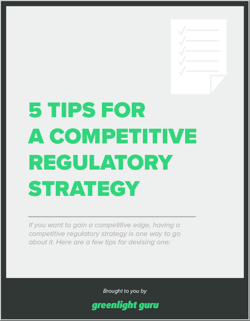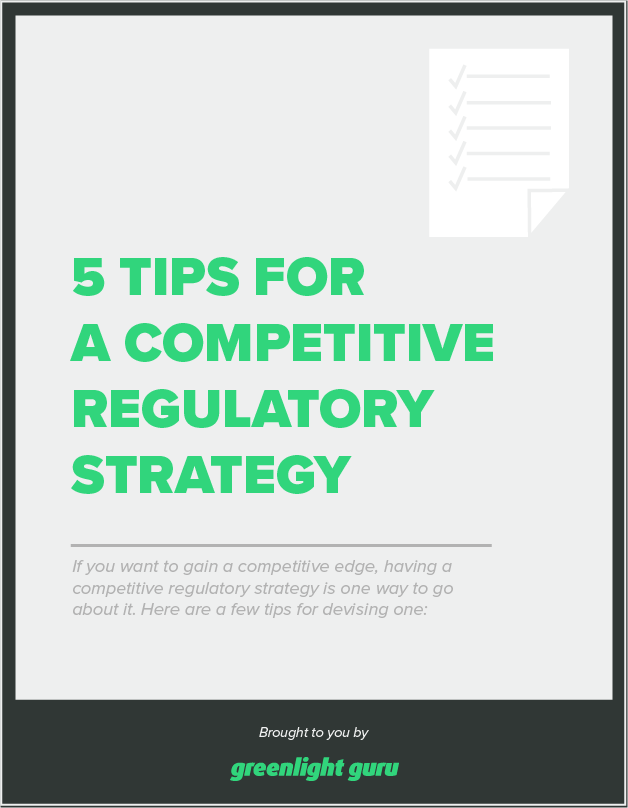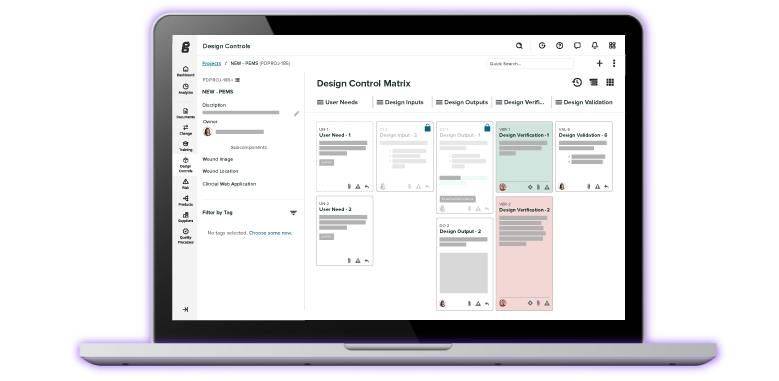Planning Your Medical Device Global Market Regulatory Strategy

A regulatory strategy is more than just picking a pathway to market. It’s an in-depth process by which you choose the best markets and pathways not only for your device, but for your business as a whole.
The earlier you can begin this process, the better. For one thing, you’ll need a solid regulatory strategy in place to take to upper management and get a budget for the development of your device. But having your regulatory strategy nailed down will also allow you to curb any scope creep that may be happening in product development.
So, let’s talk about what questions you’ll need to answer and what you’ll need to define as you build out your global regulatory strategy.
3 steps in building your global market regulatory strategy
Define your device and build a deep knowledge base on it
The first step in building your global regulatory strategy is defining your device. That means answering some basic questions about the device and how it will be used. For example:
-
What indications for use will you claim?
-
What is the intended use of the device?
-
What is its duration of use? (e.g. is it an implantable?)
-
What is the patient population this device is intended for?
-
What are the benefits and risks of this device?
-
Is the device reusable? If so, are there consumables that you can sell with it (e.g. a special wipe for cleaning it between uses)?
Nailing down your indications for use is especially important because the number of indications you claim will affect the time and money it takes to get to market. Think of it like this: if your device can be used for X, Y, and Z, then you will need to prove that it’s safe and effective for treating X, Y, and Z.
Maybe proving all three of those indications for use is feasible and can be part of your plan. On the other hand, if you want to get to market faster, it may be more advantageous to begin by only claiming X as an indication for use. Once the device is on the market and making money, you can begin testing its effectiveness for Y and/or Z.
Patient population should also be defined here, as that will help determine where you’ll carry out clinical studies and what markets you’ll attempt to enter first.
The major benefit you’ll get from defining your device early on is clarity. You don’t want to be rehashing fundamental questions about this device while trying to figure out markets and pathways. That way lies madness, my friends.
Consider which markets may give you the best start
It’s true that the US and the EU are the world’s largest markets for medical devices. However, that doesn’t mean you have to start in one of those markets.
If your company is located outside of those locations, maybe it will be easiest to begin selling this device “at home”, where you have a deep understanding of the regulations and may have a prior relationship with the regulatory body and/or contract manufacturers.
It’s also a good idea to keep your finger on the pulse of changing regulations, harmonization, and agreements between regulatory bodies, like the Medical Device Single Audit Program (MDSAP). As we’ve seen in Europe, changes in regulations can have a profound impact on if and when companies enter a market.
A company that may have once tried to get regulatory approval in Europe first may now be looking to the US or another location outside of Europe for their initial submission. For instance, it may make more sense to get a device on the market in the US, gather real-world data on its use, and prepare to meet the more challenging European regulations.
Once you have a good idea of which market(s) you’ll be targeting first, create a list of the applicable regulations and guidance documents, as well as any standards the relevant regulatory body recognizes.
Also compile information on:
-
Device classification
-
Clinical data requirements
-
Submission types and justification
-
Submission content
-
Timelines
-
Roles and responsibilities (like the PRRC in the EU)
-
Reimbursement
This information will help you decide where your first regulatory submission should be, and it will also help keep any regulatory requirements from slipping through the cracks as you move forward.
Consider your regulatory strategy from a competitive standpoint
Your market pathway and your regulatory strategy are not synonymous.
As long-time podcast guest Michael Drues, PhD put it on the Global Medical Device Podcast, your market pathway is the mechanism by which you get your device to market. Your regulatory strategy is the process by which you end up with a pathway to market.
This difference is important because you almost always have multiple options for the market pathway you’ll use to get your device on the market. The decision between using the 510(k) pathway and Pre-Market Approval (PMA) in the US, for instance, is not as clear cut as some might have you believe.
This decision shouldn’t just be about the short-term cost or the speed of getting your device onto the market. A 510(k) might be easiest for you, but that also means it’s easy for a competitor following on your heels.
For example, a PMA might take longer and cost more, but it would effectively make it much more difficult for a competitor to follow your device onto the market. It’s true you have to jump through some hoops to get a device to market, but you can also choose to arrange those hoops to make it more difficult for someone to jump through after you.
Larger companies with more resources should think carefully about this, because they likely have the money and the experience to weather a longer road to market and potentially limit the amount of competition once their device is on the market.
Does that mean you should always take the hardest path to market? Not at all. There are absolutely other variables that need to be considered (like costs associated with your regulatory submission).
But a regulatory strategy should be outward looking as well as inward looking. Consider the competitive advantage and sharpen your regulatory sword.
Greenlight Guru makes regulatory compliance easy
No matter what markets or regulatory pathways you choose, there are some things that simply won’t change—like, for example, regulatory requirements around your QMS. Whichever market you’re in, your QMS needs to be fully traceable and ready for audits or inspections at all times.
That’s why at Greenlight Guru, we offer the only QMS software designed by medical device professionals specifically for medical device professionals. Our comprehensive, out-of-the-box solution is based on the latest FDA and ISO standards, as well as best practices of medical device manufacturers who lead the industry in production of high-quality devices.
When you choose Greenlight Guru, you’re choosing the QMS platform that over 1,000 medical device companies trust to keep them compliant and audit-ready. So, if you’re ready to see what a purpose-built QMS can do for your business, then get your free demo of Greenlight Guru today.
Etienne Nichols is the Head of Industry Insights & Education at Greenlight Guru. As a Mechanical Engineer and Medical Device Guru, he specializes in simplifying complex ideas, teaching system integration, and connecting industry leaders. While hosting the Global Medical Device Podcast, Etienne has led over 200...
Related Posts
The FDA Medical Device Approval Process: Pathways, Timelines, and Tips
Carrying out a supplier audit: when and how to audit your suppliers
Entering the Australia & New Zealand Markets: What Medical Device Manufacturers Need to Know
Get your free resource
5 Tips for a Competitive Regulatory Strategy










